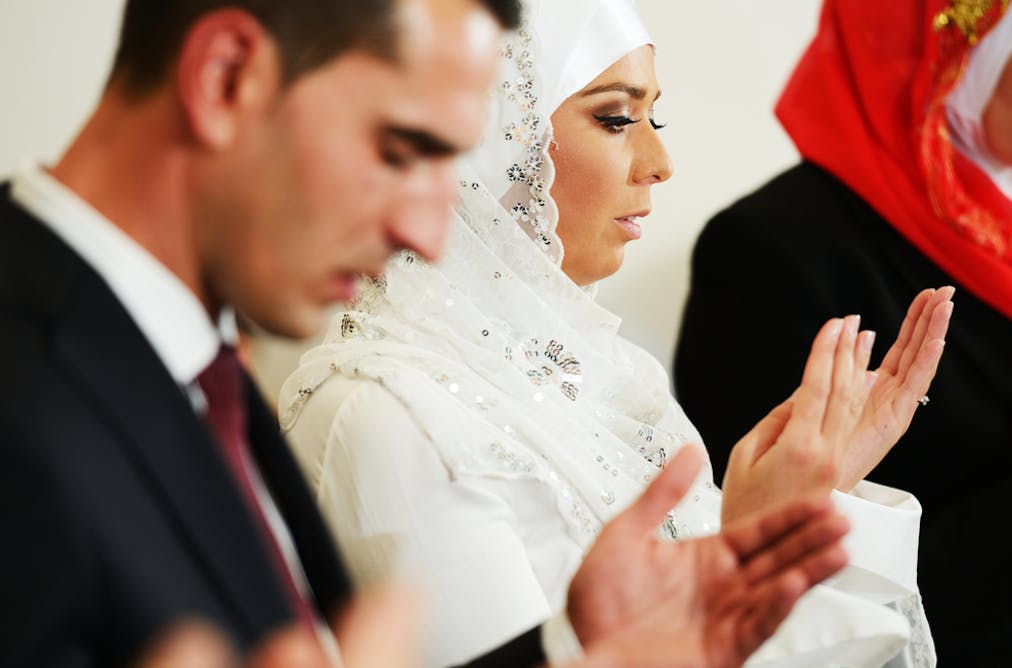Van Eijk, E. (2019). Khulʿ divorce in the Netherlands: Dutch Muslim women seeking religious divorce. Islamic Law and Society, 26(1-2), 36-57.
“Marital captivity is a situation in which someone is ‘trapped’ in a religious marriage because he or she is unable to terminate his or her religious marriage”. (Van Eijk, 2019, p. 38)

Summary
Van Eijk’s (2019) case study of the Netherlands’ Muslim divorce-process demonstrates how the lack of a clear definition of a valid Muslim divorce, combined with the Netherland’s lack of acknowledgement of religious marriage leads to a deadlock, namely a ‘marital captivity’ whereby the civilly divorced remain tied together religiously. Their inability to travel to traditional Muslim authorities for divorce and the woman’s subordinate position leads to Muslim women’s fear of divorce and its consequences (e.g., husband’s demands, losing children, compensation). Yet, there is hope for development, as demonstrates Naseem’s opportunity of civil tort action.
Link to customary law
Similarly to the case of the conflict between official- and living customary law, civil- and religious marriage are a complex issue.
Like official- and living customary law – whereby an official-national, written format of customary law stands against the mostly oral, locally acknowledged living customary law (Bennett, 2008, p. 183) –, in the Netherlands the official, nationally documented civil marriage conflicts with religious marriage, that is, in this case, the practice of a smaller Muslim community within the country (Van Eijk,2019).
Also, marital captivity resonates the case of Pilane, whereby a community was trapped due to the customary law preserving protection for the corrupt, unaccepted leadership (Classense & Budlender, 2013, p. 82-87). Similarly to marital captivity, – that may arise due to the religious doctrine’s not recognising divorce, due to the lack of cooperation of one party, or due to the marriage-registration remaining in another country (Van Eijk, 2019, p. 42), –customary law did not acknowledge the community’s will to secede from the corrupt leadership, the leadership did not cooperate with the rest of the community and so the entire community was kept ‘registered’ as one (Classense & Budlender, 2013, p. 82-87).
Another parallel between living customary law and religious marriage can be drawn. As in the case of Mayelane, whereby the second marriage was ruled invalid due to it being not recognised by the first wife and her consent (Classense & Budlender, 2013, p. 89-94), Naseem’s religious marriage was not recognised in the country where they lived and got married (Van Eijk,2019). Having difficulties invalidating something that was not recognised in the first place raises questions. My concern is that, for Naseem and Faisal, as Muslims in the Netherlands, the religious marriage could be ruled as a pact that was not official in the first place, and therefore needs no invalidation. That is, if they acknowledge the local Dutch custom of their religious marriage not being recognised. Yet, globalisation twists aroundthe gap between the ‘official’ (in this case, Muslim religious law) and ‘local practice’ (of the Netherlands), that can be narrowed – by practices, such as the civil tort action in Naseem’s case – but can never be closed completely – as she remains in uncertainty (Zenker, 2020, p. 162; Van Eijk,2019).
References
Bennett, T. (2008). Official vs living customary law: dilemmas of description and recognition. In A. Claassens & B. Cousins (eds.), Land, power and custom. Controversies generated by South Africa’s Communal Land Rights Act (pp. 138-153). Cape Town: UCT Press.
Claassens, A., & Budlender, G. (2013). Transformative constitutionalism and customary law. Constitutional Court Review, 6, 75-104.
Van Eijk, E. (2019). Khulʿ divorce in the Netherlands: Dutch Muslim women seeking religious divorce. Islamic Law and Society, 26(1-2), 36-57.
Zenker, O. (2020). Mind the gaps. Renegotiating South African legal pluralism within the post-apartheid State. In K. Seidel & H. Elliesie (eds.), Normative spaces and legal dynamics in Africa (pp. 151-171). London: Routledge.
Comments
Post a Comment